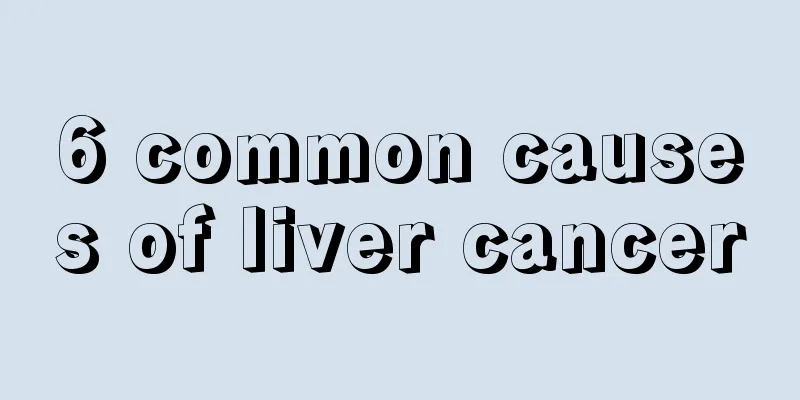6 common causes of liver cancer

|
Liver cancer is the third most common malignant tumor with a mortality rate second only to gastric cancer and esophageal cancer. The initial symptoms are not obvious. In the late stage, the main symptoms are liver pain, fatigue, weight loss, jaundice, ascites, etc. The age of onset is generally between 30 and 60 years old, and 40 to 50 years old is the peak age for liver cancer. The most common site of liver cancer is the right lobe. Clinically, surgery, radiotherapy, chemotherapy and traditional Chinese medicine are generally used for treatment. In the late stage, liver cancer cells spread and the cure rate is low. 1. Chronic viral hepatitis is one of the most common causes of liver cancer. Chronic hepatitis B and chronic hepatitis C are the two most threatening. 2. Aflatoxin Aflatoxin, the metabolite of aflatoxin, has a strong carcinogenic effect. Aflatoxin contamination of grain or food is one of the important factors for the development of liver cancer. Nitrosamines, azo mustards, alcohol, organochlorine pesticides, etc. are all suspected carcinogens. 3. Water pollution Some drinking water is often polluted by polychlorinated biphenyls, chloroform, etc. In recent years, it has been found that blue-green algae growing in ponds are strong carcinogenic plants that can pollute water sources. Parasitic diseases such as Clonorchis sinensis infection can stimulate bile duct epithelial hyperplasia and lead to primary bile duct cancer. 4. Chemical carcinogens are common carcinogenic factors. Chemical substances that can cause liver cancer are mainly N-nitroso compounds, such as nitrosamines and nitrosamides. In addition, pesticides, alcohol, safrole, etc. can also induce liver cancer. 5. Immune status The plasma of liver cancer patients contains a blocking factor that can inhibit cellular immunity and protect liver cancer cells from being killed by immune cells. People who often stay up late, drink alcohol, and overwork may have reduced immune function. 6. Mutagens and viruses in the gene mutation environment stimulate the activation of liver cell division response pathways, causing point mutations and gene translocations in cells, which are possible factors that accelerate the proliferation of cancer cells. |
<<: Prevent lung cancer from three aspects in life
>>: The localization diagnosis of liver cancer has taken a step forward
Recommend
TCM Syndrome Differentiation of Chronic Pharyngitis
The incidence of chronic pharyngitis is very high...
What are the dangers of pregnancy with prostate cancer
Prostate cancer is a common disease among men. Th...
How to improve oily hair? Rely on these six methods
The adverse effects of oily hair on people are hu...
Is there any specific medicine for lung cancer
What are the specific drugs for lung cancer? The ...
What can I use to wash off black ink?
Black ink is difficult to clean once it drops on ...
Tips for staying up all night without feeling sleepy, dedicated to overtime workers
If you want to stay up all night without feeling ...
Three bases for distinguishing bone cancer from benign bone tumors
The incidence of benign bone tumors is higher tha...
Can attention deficit heal itself?
Attention deficit disorder is a mental disorder t...
How to recover quickly from abdominal strain
Although sit-ups can help you grow abdominal musc...
I feel pain in my thigh
At present, in daily life, we often find thigh mu...
Can advanced ovarian tumors be cured after surgery?
Ovarian tumors can be divided into benign and mal...
What does B-ultrasound check during physical examination
In fact, there are many types of B-ultrasound, an...
The function of rubber tree
Rubber tree is a common plant in people’s daily l...
How long can you live with gynecological diseases in the early stages of cervical cancer
For cancer patients, the topic they care about mo...
The difference between sunscreen and sunblock lotion
In the hot summer, many people are reluctant to g...









